Light is the connection between us and the universe. Through light, we could experience distant stars and look back at the beginning of the existence of the universe itself. But what is light?
In essence, Light, is the smallest quantity of energy that can be transported, which is called a quanta. A photon is an elementary particle without a real size which can’t be split, only created or destroyed. Light also has a wave-particle duality property where it demonstrates the behavior of a particle and a wave at the same time (although this is a lie). Mostly when we talk about light, we actually mean visible light which is a miniscule part of the electromagnetic spectrum: energy in form of electromagnetic radiation. Electromagnetic radiation consist of an enormous range of wavelengths and frequencies.
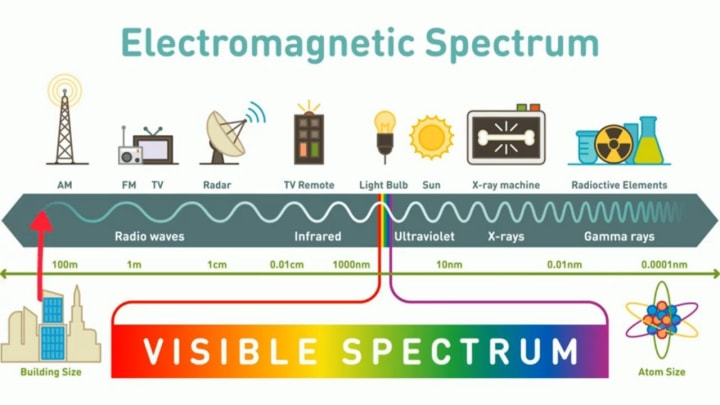
Gamma rays have the smallest wavelength and the reason for that is they have the highest energy photons. Most gamma rays are just under ten picometers which is way smaller than a even the hydrogen atom, which in itself is basically just an electron revolving around a proton. For understanding, a hydrogen atom compared to a cent is about as big as a cent compared to the Moon. Most of the gamma rays sometimes referred to as cosmic radiation (which consists of particles travelling at relativistic speeds), travelling in the deep space is produced within stars due to nuclear fusion or by stellar events like decaying of a star, a supernova or collision of objects supermassive objects like stars and black holes.
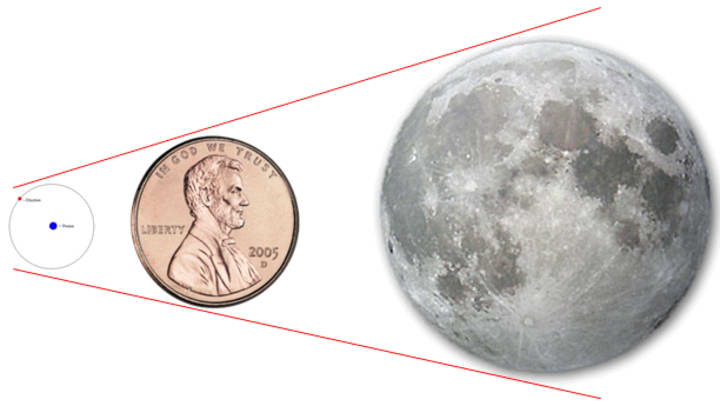
When this super energetic light looses its energy due to electronic collisions, it transforms into various other forms of lower energy lights from X-Rays to Radio waves. Visible light is in the middle of the spectrum in a range of about 400 nanometers to 700 nanometers: about the size of a bacteria. On the other end of the spectrum, radio waves can be up to 100 kilometers in length. The biggest wave lengths we know exist can span from 10,000 kilometers to a mind boggling 100,000 kilometers which is many many times larger than even the Earth. From a physics stand point, all these different waves are the same. They all exhibit the wave-particle duality and travel at ‘c’, the speed of light or an immense 299,792,458 m/s, but just at different frequencies.
Visible Light and Evolution
So what makes visible light special, then? Well… Absolutely nothing. Humans just happen to have evolved eyes, that are good at understanding and interpreting exactly this part of the electromagnetic spectrum. This is not a complete coincidence though. Visible light is the only part of electromagnetic spectrum radiation that propagates when in water, which happens to be where most eyes first evolved, millions of years ago. That was an evolutionary aspect because light not only interacts with matter, it’s also altered by it and can be used to gather information about the world around us, with perceivably no delay. Which is arguably really helpful for survival.
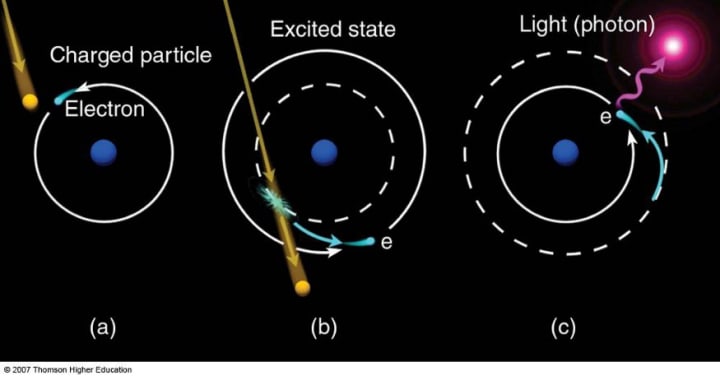
Generation of Light
Okay, where does light come from? A vast range of electromagnetic waves are created when atoms or molecules drop from a higher state of energy to a lower one. They lose energy and emit it in the form of radiation. At the microscopic level, visible light is created when an electron within an atom in an excited state drops to a lower energy state and loses this excess energy. In the same way, incoming light can elevate an electron to a higher state of energy by being absorbed by it. Macroscopically, the moving charge of the electron creates an oscillating magnetic field, which in turn creates an oscillating electric field perpendicular to it. These two fields move through space, transferring energy from one place to another, carrying information about its place of creation with it. This information is extrapolated and is used to study the origin of light and its source, hence help in identifying the properties of celestial objects in space like galaxies, stars and nebulae.
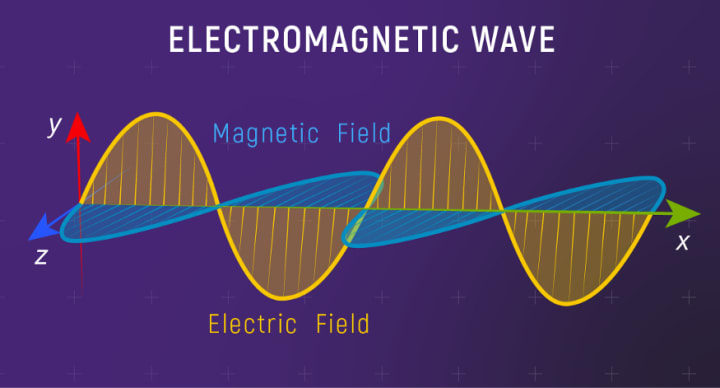
Why is light the fastest?
Why of all the things in the universe is light the fastest thing there is? Let’s change the question: What is the fastest way to travel through space in the universe? It’s c, or the speed of light, exactly two hundred ninety-nine million, seven hundred ninety-two thousand, four hundred and fifty-eight meters per second in a vacuum, one billion kilometers per hour.
Electromagnetic radiation just happens to move this fast. Any particle that has no mass travels at c, without acceleration. The light that has released from a candle does not speed up until it reaches light speed, At the very instant of its creation, its speed is c. So why is c, the speed of light, finite then? Well, nobody knows. Our universe is just built this way. We don’t have the smart answer here.
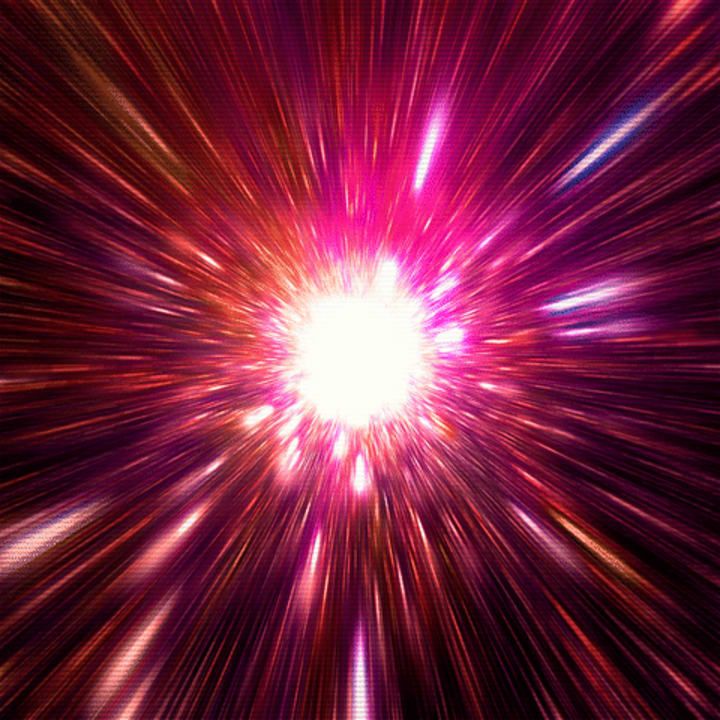
So light is part of a spectrum, an elementary particle that also behaves like a wave, Propelled by two perpendicular fields, travelling at the speed limit of the universe.
Okay, that’s nice and all, but what about the crazy stuff about travelling at the speed of light, and time, the twin paradox, quantum stuff, things like that?. For now, let’s be happy that we’ve evolved eyes that pick up waves of information permeating the universe. Making us see things and put our existence into perspective.
Author: Kartikeya Agarwal
Kartikeya Agarwal
About the Creator
Bleeding Edge
A one-stop destination for all the tech around the world. Bleeding Edge is an analytics hub, sharing top software, companies, rankings and reviews.
Enjoyed the story? Support the Creator.
Subscribe for free to receive all their stories in your feed. You could also pledge your support or give them a one-off tip, letting them know you appreciate their work.



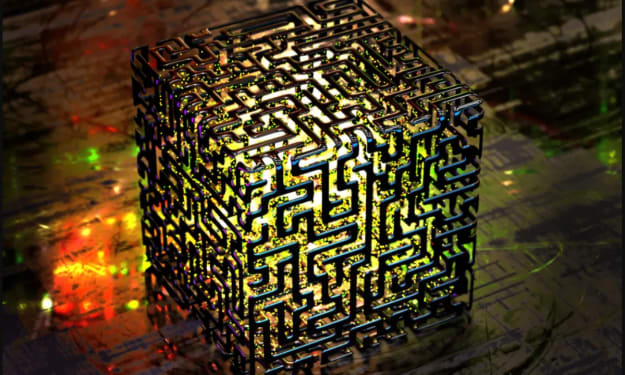



Comments
There are no comments for this story
Be the first to respond and start the conversation.